Results 3,871 to 3,880 of 12096
Thread: Anandtech News
-
05-15-14, 03:01 AM #3871
Anandtech: HTC One mini 2 Announcement
Today, HTC is launching the HTC One mini 2, a phone that is supposed to be a smaller version of the HTC One (M8), both in price and size. As a direct successor to the HTC One mini, a surprising amount has changed. The camera is no longer the Ultrapixel sensor, the display and overall size increase, NFC shows up, and the SoC has been changed to use a quad core Cortext A7 setup over the dual core Krait setup from last year. A list of the differences between the One mini, One mini 2, and One (M8) can be seen below.
[TR="class: tlblue"]
[TD="width: 120"] [/TD]
[TD="width: 170, align: center"] HTC One mini 2[/TD]
[TD="width: 170, align: center"] HTC One (M8)[/TD]
[TD="width: 170, align: center"] HTC One mini[/TD]
[/TR]
[TR]
[TD="class: tlgrey"] SoC[/TD]
[TD="width: 170, align: center"] MSM8926 1.2 GHz Snapdragon 400[/TD]
[TD="width: 170, align: center"] MSM8974ABv3 2.3 GHz Snapdragon 801[/TD]
[TD="width: 170, align: center"] MSM8930 1.4 GHz Snapdragon 400[/TD]
[/TR]
[TR]
[TD="class: tlgrey"] RAM/NAND[/TD]
[TD="width: 170, align: center"] 1 GB, 16GB NAND + microSD[/TD]
[TD="width: 170, align: center"] 2GB LPDDR3, 16/32GB NAND + microSD[/TD]
[TD="width: 170, align: center"] 1 GB LPDDR2, 16GB NAND[/TD]
[/TR]
[TR]
[TD="class: tlgrey"] Display[/TD]
[TD="width: 170, align: center"] 4.5” 720p LCD[/TD]
[TD="width: 170, align: center"] 5” 1080p LCD[/TD]
[TD="width: 170, align: center"] 4.3" 720p LCD[/TD]
[/TR]
[TR]
[TD="class: tlgrey"] Network[/TD]
[TD="width: 170, align: center"] 2G / 3G / 4G LTE (Qualcomm MDM9x25 UE Category 4 LTE)[/TD]
[TD="width: 170, align: center"] 2G / 3G / 4G LTE (Qualcomm MDM9x25 UE Category 4 LTE)[/TD]
[TD="width: 170, align: center"] 2G / 3G / 4G LTE (Qualcomm MDM9x15 UE Category 3 LTE)[/TD]
[/TR]
[TR]
[TD="class: tlgrey"] Dimensions[/TD]
[TD="width: 170, align: center"] 137.43 x 65.04 x 10.6mm, 137 grams[/TD]
[TD="width: 170, align: center"] 146.36 x 70.6 x 9.35mm max, 160 grams[/TD]
[TD="width: 170, align: center"] 132 x 63.2 x 9.25 mm, 122 grams[/TD]
[/TR]
[TD="class: tlgrey"] Camera[/TD]
[TD="width: 170, align: center"] 13MP rear camera, 1.12 µm pixels, 1/3.06" CMOS size, F/2.2. 5MP f/2.0 FFC[/TD]
4.0 MP (2688
More...
-
05-15-14, 09:01 AM #3872
Anandtech: Xiaomi Announces the MiPad: The First Tegra K1 Device
Today Xiaomi introduced its latest tablet: the MiPad. The tablet bears similarity to both Apple’s iPad Mini and iPhone 5c. On the front of the tablet we have a 7.9” 2048x1536 IPS display (sourced from both Sharp and AUO Optronics) which is surrounded by an asymmetrical bezel. On the back we have a plastic shell of multiple different colors which Xiaomi itself states is made with the same injection molding technology as the iPhone 5c. There is also an 8MP Sony camera on the back with an F/2.0 aperture, and a 5MP camera on the front. The most interesting part of the Mi Pad is not on the outside, it's on the inside. The MiPad is the first consumer device to be announced that is powered by NVIDIA's Tegra K1 SoC.
As you may recall, NVIDIA introduced Tegra K1 to the world at CES 2013. It marks a huge departure from NVIDIA's mobile graphics strategy, abandoning the old Tegra GPU roadmap in favor of its desktop Kepler architecture.
Tegra K1 has two flavors, both built on a 28nm HPm process. One uses NVIDIA's Project Denver which will include two custom ARMv8 cores designed by NVIDIA's. Denver is not slated to ship until later this year and so what we see in the MiPad is the other flavor of Tegra K1 which is a quad core ARM Cortex A15 design. Similar to other recent Tegra SoCs, this version of the K1 features four Cortex A15s plus an additional companion Cortex A15 optimized for lower frequencies for periods of low CPU usage. The CPU cores are based on a newer revision of Cortex A15 (r3p3) which includes finer grain power gating to reduce power consumption compared to revision r2p1 in the Tegra 4. This increase in efficiency will help balance out NVIDIA's move from a 1.9GHz max clock speed on Tegra 4 to over 2GHz on Tegra K1 (the move to 28nm HPm should help as well). The Tegra K1 SoC in the MiPad will ship with a max clock speed of 2.2GHz and 2GB of LPDDR3 RAM.
The GPU on Tegra K1 is something completely different from previous Tegra designs. Previous Tegra chips integrated NVIDIA's GeForce ULP core designed exclusively for its mobile platforms. With Tegra K1 Nvidia abandoned the idea of having a separate mobile roadmap for GPU designs and has merged its mobile and PC GPU roadmaps. The result is that Tegra K1 and all subsequent designs will ship with GPUs using the same architecture as NVIDIA's PC parts. With Tegra K1 we get a complete implementation of NVIDIA's Kepler architecture with 192 CUDA cores, 4 ROPs, and 8 texture units. It also brings along OpenGL ES 3.0, OpenGL 4.4, DirectX 11, CUDA 6.0, and every other API that Kepler supports.
NVIDIA has also shown a commitment to releasing software that will take advantage of their mobile GPUs. The company recently worked with Valve to bring Half Life 2 and Portal over to the NVIDIA Shield which is powered by a Tegra 4 CPU and I am sure that crafty users will bring the apps over to Tegra K1 devices if NVIDIA does not do so itself.
Beyond the SoC, the other internal specs for the MiPad include a 25.46 Whr (6700mAh) battery, 16 or 64GB of internal NAND, and a MicroSD slot. Connectivity includes support for 802.11 b/g/n/ac and Bluetooth 4.0. As with other Xiaomi devices, the MiPad runs Android with the MIUI UI atop it. It will launch in China sometime in June priced at 1499 yuan ($240) for the 16GB model and 1699 yuan ($272) for the 64GB model.
Source: Xiaomi via The Verge
More...
-
05-15-14, 12:02 PM #3873
Anandtech: Samsung SSD XP941 Review: The PCIe Era Is Here
For most of the last decade, SATA has been the dominant interface in the consumer storage space. As long as hard drives were the major media for storage, SATA provided everything that the industry needed. It was fast, efficient and low in cost. But that all changed when SSDs entered the market. With NAND, the storage media was no longer the bottleneck; it was the interface. The industry had to find a way to satisfy the constantly growing need for bandwidth and the obvious solution was PCIe. Samsung was the first to the market in 2013 with their XP941 but instead of selling it to everyone, Samsung limited it to OEMs. After months of battling, we finally got a review sample and put the XP941 through our normal suite of tests. Read on to find out how fast you can go with the XP941 and PCIe!
More...
-
05-15-14, 04:00 PM #3874
Anandtech: 14 Days of Humble Bundles #3: Banner Saga
The next update to Humble’s 14 Days of Bundles brings us RPG mixed with tactical combat, all wrapped up in a crunchy Viking shell. This is a bit of an interesting bundle as the core game – The Banner Saga: Factions – is actually Free to Play, which of course means it’s supported by micro transactions or other forms of monetization. The core content is “name your price”, so for as little as one penny you can get the Starter Pack (normally $1.99) along with a collection of artwork from the game. That might not seem like much, but at least it’s (potentially) only a penny, though you can always pay more if you’re being generous. Beating the average price will also get you the Variations Pack (normally $9.99), while a donation of $15 or more will get you the full Banner Saga game (normally $24.99).
I need to clarify what you’re really getting, though. The Banner Saga: Factions game (67%, 02/2013) is actually multi-player only and involves you fighting against other humans in tactical battles. I tried it briefly – it’s free, after all – and depending on your feelings for PvP battles it could be a nice way to pass the time. Me, I’m a bit of a gaming recluse these days and like my games to be single-player affairs, so it’s not really my thing. That means the core package doesn’t do me much good, as the Starter Pack just unlocks four rank 1 units. The Variations Pack isn’t any use either, as that’s merely 12 variations on each advanced class that you can use when you promote them, again for the Factions portion of the game. So the real draw here would be for the Banner Saga single-player game (80%, 01/2014), which means you have to donate at least $15. At least the game has received decent reviews from the gaming critics, with many comparing it to a Norse variant of Game of Thrones.
The story of how the Banner Saga came to be is also somewhat interesting, as it came to life as part of a Kickstarter project back in April, 2012. With an initial goal of $100,000, developer Stoic more than reached that target with $723,000+ raised during the funding period. Stoic consists for just three people, with a background in game design that includes credits like The Old Republic. There’s one developer and two artists, and with their combined talents they were able to crank out the single-player game in just under two years. The graphics largely consist of comic-style art with some rather nice backgrounds, as you can see from the screen shots.
Short summary: today’s Banner Saga bundle is a good way to get into the single-player game for $15 instead of the usual $25, which means you’re only paying $5 more than the early Kickstarter backers for the game. The Factions aspect doesn’t seem to be well populated from what I’ve seen, though this Kickstarter might add some new players to the mix, and personally I didn’t find much there to keep me playing. Most people seem to feel the same, given that the current average price is currently $10.91 with over 3000 copies sold, so it looks like buyers are going for the $15+ donation.
Gallery: 14 Days of Humble Bundles #3: Banner Saga





More...
-
05-15-14, 06:31 PM #3875
Anandtech: Testing Improved 4K Display Support in OS X 10.9.3
Today Apple released the long awaited OS X 10.9.3 update. The update comes after nine weeks of beta testing, each week with a new release. One of the most interesting things about the update is not in its content but in how Apple opened up their beta seed program to all users when it was traditionally reserved for those who are part of Apple’s developer program.
The most major improvement of the update is the improved 4K (3840x2160) display support on OS X. Prior to 10.9.3 the support for 4K displays on OS X was lacking. Only a small group of monitors from ASUS and Sharp were supported for running at 3840x2160 with a 60Hz refresh rate, and the scaled display options that Apple introduced with the original Macbook Pro with Retina Display were unavailable. This made for poor usability on monitors like the Dell UP2414Q which is only 24” and has extremely small UI elements when running unscaled at its native resolution. In 10.9.3 Apple has greatly expanded the list of compatible 4K displays and has introduced scaling modes for those who prefer sharper UI elements over display real estate.
Anand took a look at the changes to 4K support in the first beta of 10.9.3. Apple now gives the user options for display scaling which includes settings for a workspace that looks like 3200x1800, 2560x1440, 1920x1080, or 1280x720. All of these are handled the same way as on the Macbook Pro with Retina Display where the display is rendered offscreen at twice the selected vertical and horizontal resolution and then scaled down to the panel. In the case of the 3200x1800 setting this means that the display is rendered offscreen at 6400x3600 which may cause performance issues when being driven with the Intel Iris graphics of a Macbook Pro with Retina Display or the entry level 21.5” iMac.
With 10.9.3 Apple has not only broadly increased support for 4K displays, but also enabled 60Hz output to 4K displays on more systems. The Dell UP2414Q, a 24" 3840 x 2160 display, is now properly supported by OS X and Macs that can drive it at its native resolution. Apple appears to have manually added a profile for the UP2414Q as its scaled resolutions are somewhat different from the 30" Sharp/ASUS 4K panels.
There is no native 3840 x 2160 resolution exposed on the UP2414Q and by default OS X appears to want to run the panel in a 1080p Hi-DPI mode. This is similar to what happens on the rMBPs where text/UI elements appear as they would on a 1080p display, while images, videos and other similar objects appear as they would on a 3840 x 2160 display.Apple OS X 10.9.3 4K Display Handling Scaled Resolution ASUS/Sharp 30" 4K Dell 24" 4K (UP2414Q) Best for Display Setting 3840 x 2160 1080p Hi-DPI Scaled Resolution 1 1504 x 846 (3008 x 1692) 1504 x 846 (3008 x 1692) Scaled Resolution 2 1920 x 1080 (3840 x 2160) 1920 x 1080 (3840 x 2160) Scaled Resolution 3 2560 x 1440 (5120 x 2880) 2304 x 1296 (4608 x 2592) Scaled Resolution 4 3008 x 1692 (6016 x 3384) 2560 x 1440 (5120 x 2880) Scaled Resolution 5 3840 x 2160 3008 x 1692 (6016 x 3384)
The 24" 4K panel gains a new intermediate scaled mode of 2304 x 1296. The table above shows the frame buffer resolution in paratheses. For example, the screenshot below was taken with the UP2414Q set to its highest scaled resolution (3008 x 1692). The full untouched PNG weighs in at 19.8MB from OS X and is a 6016 x 3384 image. The screenshot open in Preview (screenshot within the screenshot) is a 2880 x 1800 screenshot, open at full size. Note how little space the screenshot occupies. Apple's Hi-DPI scaling and seamless integration across the ecosystem continues to be awesome.
Along with expanded display support, some new Macs also get the ability to drive 4K panels at 60Hz. By some I mean one: the 15-inch MacBook Pro with Retina Display from late 2013. This is the Haswell refresh of the rMBP15, and it remains the only portable Mac capable of driving a 4K panel at 60Hz over either of its two miniDP ports (HDMI is limited to 30Hz).
The 13-inch Haswell rMBP unfortunately doesn't support 4K60, although you can use its HDMI port to drive a 4K panel at 30Hz (I noted MST compatibility issues when trying to use the 2013 rMBP13's miniDP out). I suspect this has more to do with performance than a physical hardware limitation, as even running the 13-inch rMBP's primary display at a high frame rate can be a chore with a lot of windows open. The 15-inch 2013 rMBP forces the use of its GeForce GT 750M whenever you connect an external display, which helps ensure a better experience when driving a couple of high res displays. Obviously the new Mac Pro works just fine with these displays as well.
Beyond the improvements to 4K support Apple has also included various stability and security improvements. 10.9.3 also bundles the Safari 7.0.3 update which brings along its own bundle of security patches. The full changelog for the update is as follows:
OS X 10.9.3 is available now to all Mac users with a computer that supports OS X Mavericks. The changelog for the update is available in the source below and Apple will put up a page detailing the security content of the update on their security page shortly.
- Improves 4K display support on Mac Pro (Late 2013) and MacBook Pro with 15-inch Retina Display (Late 2013)
- Adds the ability to sync contacts and calendars between a Mac and iOS device using a USB connection
- Improves the reliability of VPN connections using IPsec
- Resolves an issue that prevented Font Book from installing PostScript Type 1 fonts
- Improves reliability of copying, editing and inspecting permissions of files on an SMB file server
- Improves reliability of network home directories
- Improves stability when installing configuration profiles
- Improves login speed for users in Active Directory groups
- Includes Safari 7.0.3
Source: Apple
More...
-
05-16-14, 01:37 AM #3876
Anandtech: Samsung Galaxy Tab 4 Education Launched
Samsung has announced a new tablet aimed at the education market. The Galaxy Tab 4 Education is a 10.1” WXGA (1280x800) device built with a ruggedized chassis and designed to work with Google Play for Education.
Samsung is hoping that the tablet features and price appeal to those doing purchasing for school divisions. The Android 4.4 device is equipped with a 1.2 GHz quad core processor (actual model number unknown), 1.5 GB of memory, and 16 GB of storage. Battery life from the 6800 mAH battery is rated at 10 hours for the 1.08 lb tablet.
Also included is a microSD card slot for an additional 64 GB of storage, 802.11 a/b/g/n wireless, NFC and a HDMI port. Samsung also includes its customizations on Android including Multi Window.
The specifications are decidedly low end by any modern definition, but the goal of this device isn’t ultimate performance, but a rugged durable device with a price a school district can afford.
Gallery: Samsung Galaxy Tab 4 Education





The tablet will be compatible with a future upgrade of Samsung School – an interactive classroom management solution – and for an additional $30 per device, the Google Apps for Education web console can be used to manage the device.
The device is available as of today for $369.99 through Samsung distribution and channel partners.
There is definitely some stiff competition in this space, with the Asus Transformer Pad education version coming in at a far lower cost, but without the ruggedized build. Apple's iPad is also very successful in the K-12 education market.10" Education Tablets Galaxy Tab 4 Education Asus Transformer Pad (Education) iPad w/Retina Dimensions H: 9.58" (243 mm)
W: 6.94" (176 mm)
D: 0.31" (7.9 mm)H: 10.13" (257 mm)
W: 7.02" (178 mm)
D: 0.39" (9.9 mm)H: 9.5" (241.2 mm)
W: 7.31" (186 mm)
D: 0.37" (9.4 mm)Weight 1.08 lb (490g) 1.19 lbs (550g) 1.46lbs (662g) CPU Quad Core ARM (1.2 GHz) Intel Bay Trail-T Z3740 (1.33 GHz) Dual Core A6X (1.4 GHz) GPU N/A Intel HD Graphics PowerVR SGX 554MP4 RAM 1.5 GB LPDDR3 1 GB LPDDR3 1 GB LPDDR2 Storage 16 GB + 64 GB microSD 16 GB + 64 GB microSD 16 GB Display Size and Resolution 10.1" 1280x800 10.1" 1280x800 9.7" 2048x1536 Battery 6800 mAh N/A 11,560 mAh Price $369 + $30 for Management Console $269 + $30 for Management Console, optional keyboard dock $60 $399
More...
-
05-16-14, 05:06 AM #3877
Anandtech: XFX Type 01 Bravo Case Review
Companies often try to diversify their product lineup into other market segments, and today's review is such an attempt. XFX began as a graphics card manufacturer, later branching into motherboards, power supplies, and now cases. Today we're reviewing the Type 01 Bravo today, first ever PC case from XFX. With their enthusiast roots, XFX has created a mid-tower case targeted at gamers. Read on for our full testing and analysis.
More...
-
05-16-14, 10:30 AM #3878
Anandtech: ASUS Z97-DELUXE (NFC & WLC) Review: With Two Thunderbolt 2 Too
Investing in the top range motherboard should afford a few privileges. It should come with extra features, extra components in the box, and where possible the manufacturer should put time and effort into better performance. The ASUS Z97-Deluxe (NFC & WLC) tips the scales at $400, but comes with Thunderbolt 2, an NFC connection system, a Wireless Charging system, dual SATA Express, dual Ethernet ports, 2T2R 802.11ac WiFi, M.2. support and a total of 10 SATA/USB 3.0 ports.
More...
-
05-16-14, 07:30 PM #3879
Anandtech: Humble Daily #4: Indie 8 Re-Bundled
Returning to their roots with day four of their 14 days of bundles, Humble has decided to give people a second chance at a collection of up to eleven games from the Humble Indie Bundle 8 that happened…oh, about a year ago it looks like, so this is sort of an anniversary celebration. I personally like supporting indie developers, and even though I already own two of the games I decided to buy this bundle (so if you want a copy of Thomas Was Alone or Little Inferno and you don’t want to buy the bundle, send me a note – first come, first serve basis). Here’s the complete list of games, in alphabetical order this time:
- Awesomenauts (78%, 08/2012): 6-player MOBA
- Capsized (80%, 04/2011): 2D platformer
- Dear Esther (75%, 02/2012): Interactive story that’s more art than game
- English Country Tune (~77%, 11/2011): Cerebral puzzle game; beat the average price
- Hotline Miami (85%, 10/2012): Top-down 2D action (with lots of blood and death); beat the average price
- Intrusion 2 (80%, 06/2012): Action platformer; beat the average price
- Little Inferno (68%, 11/2012): Puzzle game involving fire – lots of fire
- Oil Rush (67%, 01/2012): 3D hybrid RTS/Tower Defense game; beat the average price
- Proteus (80%, 01/2013): An exploratory “experience game” with no clearly defined goals; beat the average price
- Thomas Was Alone (77%, 11/2012): 2D puzzle-platformer with minimalist graphics, good voice-over, and a fun story
- Tiny & Big: Grandpa’s Leftovers (75%, 06/2012): 2D platformer; beat the average price
As you might guess given this is a revival of an indie bundle from a year ago, all of the games are at least a year old, but given these indie games are more about the experience than cutting edge graphics, they’re still worth a look. And as usual, your donation can go to charity, the developers, or Humble Bundle.
Gallery: Humble Daily #4: Indie 8 Re-Bundled





More...
-
05-17-14, 04:30 PM #3880
Anandtech: Humble Day 5: Team 17 Revisited
It looks like many of the bundles in this “two weeks of daily bundles” are going to be previously used bundles. I’m okay with that, as there are plenty of people – including me – that missed out on some of these. Today for instance we have a return to Team 17, which we saw last October. Here’s the list of games, as usual, grouped by pricing and sorted alphabetically:
Pay $1 or more:
- Superfrog HD (56%, 11/2013): retro platformer in the vein of Super Mario Bros, updated to HD
- Worms Blast (73%, 11/2002): a puzzler/action hybrid similar to Bust-a-Move (if you can remember that one)
- Worms Crazy Golf (~60%, 10/2011): miniature golf variant with Worms’ shenanigans
- Worms Pinball (~60%, 10/2011): a 3D pinball game, but with only one table it can get stale
- Worms Ultimate Mayhem (66%, 09/2011): a 3D “modernized” Worms game that consists of updated versions of Worms 3D and Worms 4: Mayhem
$6 or more adds:
- Worms Armageddon (~86%, 05/1999): the classis 2D “artillery duel” Worms gameplay
Donations of $10 or more also receive:
- Alien Breed: Impact (64%, 06/2010): top-down third person shooter, with multiplayer support
- Alien Breed 2: Assault (63%, 09/2010): the three part series continues…
- Alien Breed 3: Descent (64%, 11/2010): …and here’s the concluding chapter
- Worms Clan Wars (73%, 08/2013): in many ways, this is a modern, reimagined Worms Armageddon
- Worms Revolution Gold – includes 4 DLC packs (73%, 10/2012): 3D graphics with 2D gameplay; a return to the core Worms gameplay
The total price for all of these if purchased at normal Steam prices would be nearly $150, so in terms of strict value there’s a lot to offer here. There’s also a lot of repetition as the Worms games can all start to feel a bit “same-old, same old”, though variants like golf and pinball help break things up a bit. It’s telling that some of the highest ratings come from the oldest games in the series as well – Worms Armageddon is 15 years old now, which might be older than a few of our readers, and Worms Blast is coming up on 12 years old.
It’s worth nothing that all of these are Steam codes, and the games are for Windows only. I think Team 17 could get a lot more traction if they would port these to Android and include those in the bundle, but perhaps another day. The charity donation options continue to be Child’s Play and American Red Cross, and I suspect doing daily bundles will end up bringing in far more money than a single bundle running for fourteen days, so it will be interesting to see if Humble changes their approach in the future based on the results of these daily bundles.
Gallery: Humble Day 5: Team 17 Revisited





More...
Thread Information
Users Browsing this Thread
There are currently 11 users browsing this thread. (0 members and 11 guests)





 Quote
Quote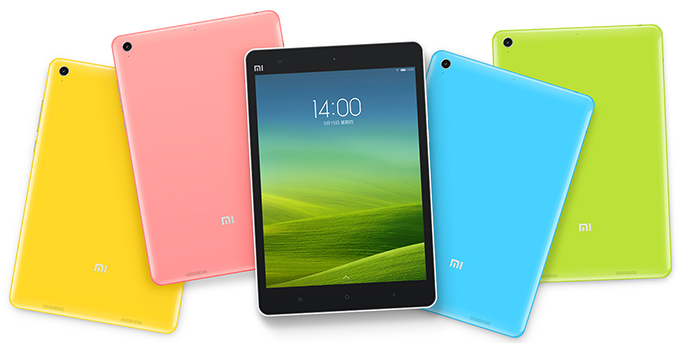
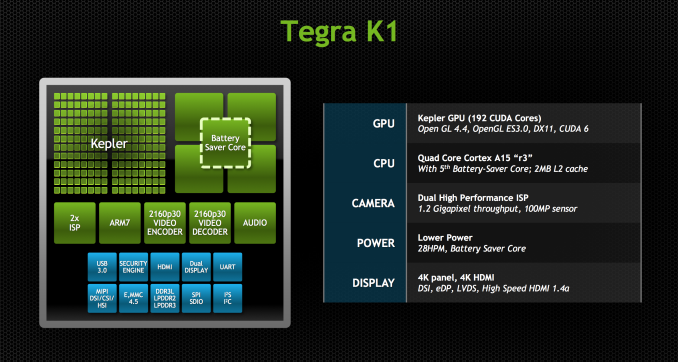
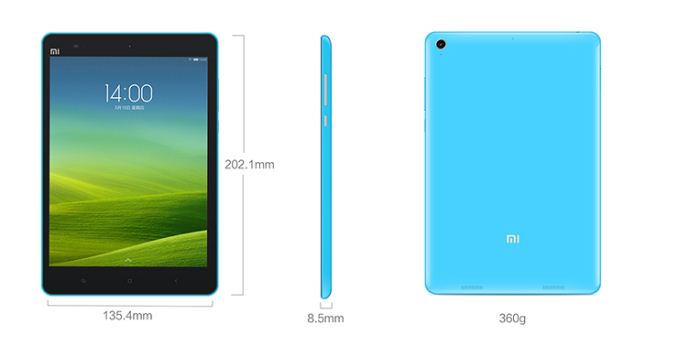
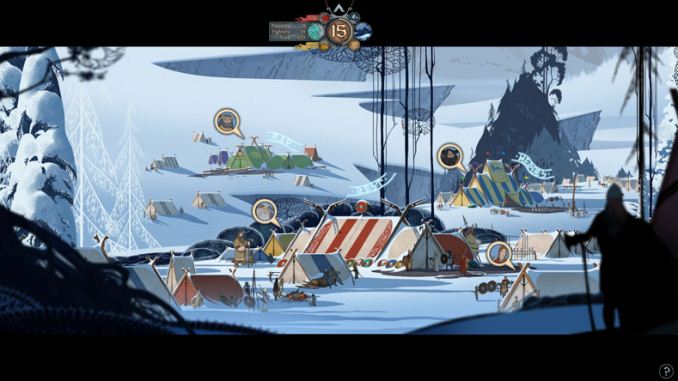

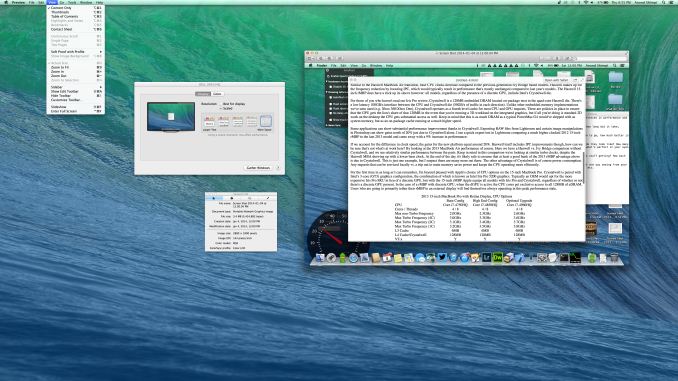
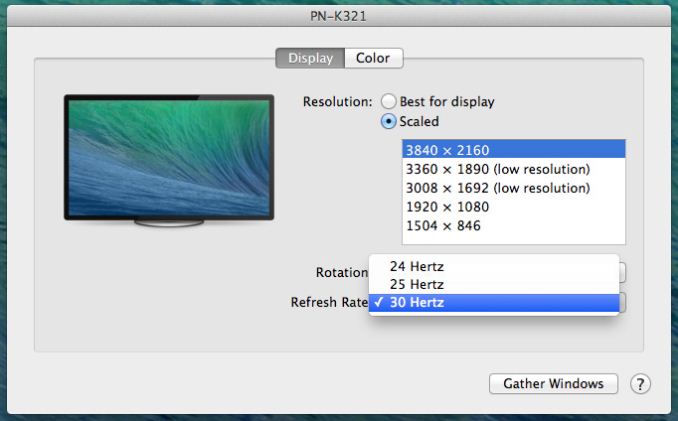

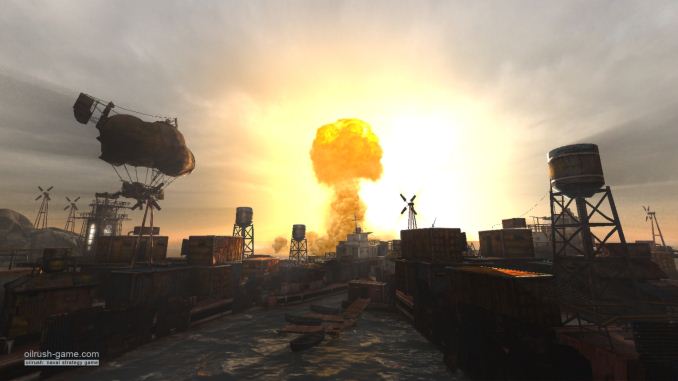
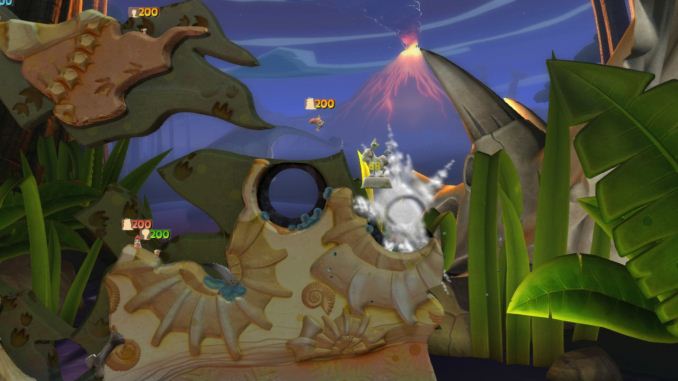
















Bookmarks